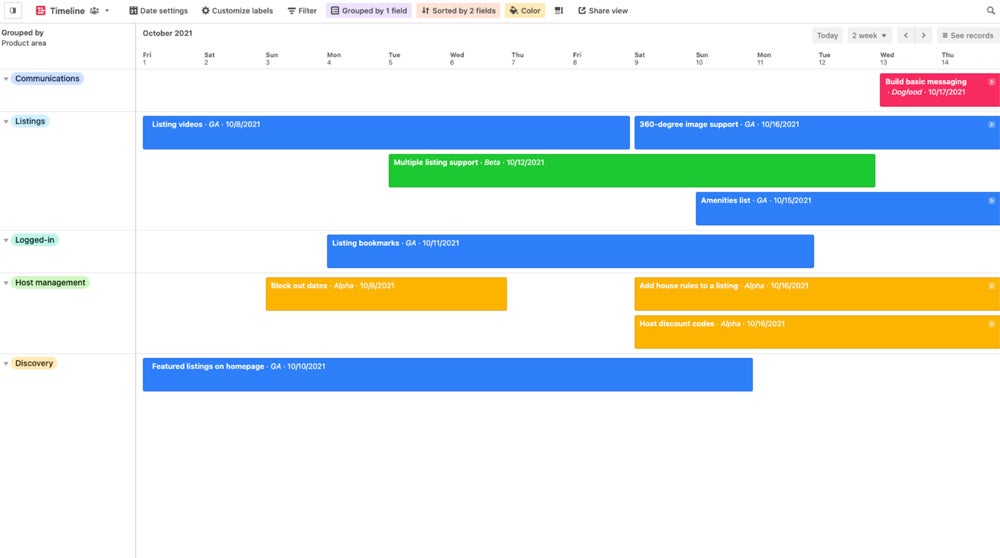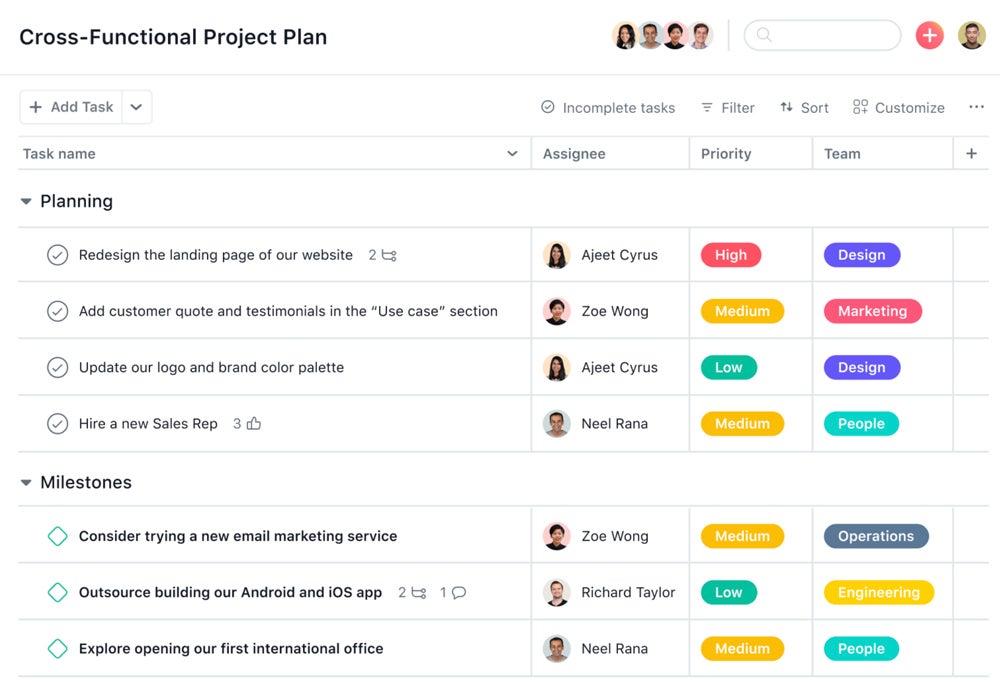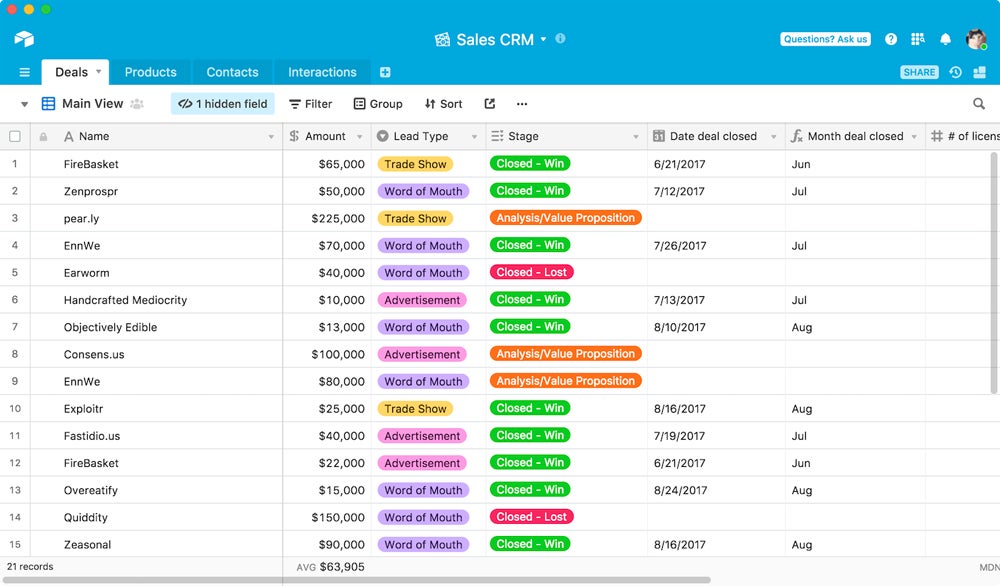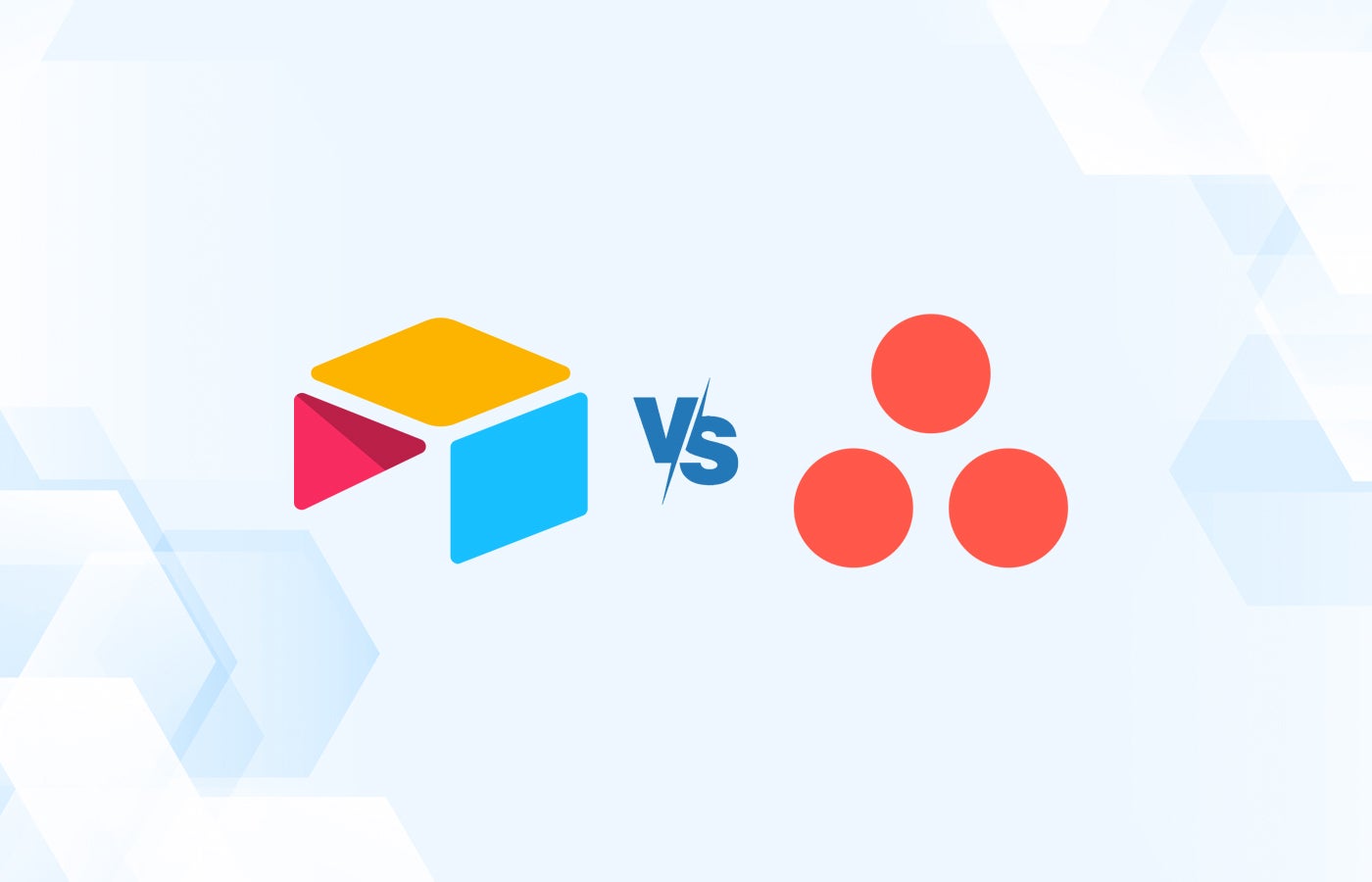Airtable and Asana are two popular choices for project management software, but each tool takes a different approach. Airtable is actually a relational database that helps teams build low-code apps for a variety of reasons — whether that’s project management, data sorting, or issue tracking. In contrast, Asana is designed for simple task and project management, so it’s easier to learn and use but lacks the flexibility of Airtable.
Featured Partners
Airtable vs Asana: Comparison table
| Features | ||
|---|---|---|
| Star rating | ||
| Starting price (billed annually) | ||
| Forever free plan | ||
| Free trial | ||
| Interface customization | ||
| Project management | ||
| Data management | ||
| Native integrations | ||
Airtable vs Asana: Pricing
Both Airtable and Asana offer multiple pricing plans to choose from, including a forever free plan and enterprise plans. Airtable’s free plan only supports five people, while Asana’s plan supports up to 10 people, making it a better choice for those looking for free small business project management software.
Airtable’s entry-level plans are close to double the cost of Asana’s, which is one of the reasons why I gave Airtable’s pricing plan an expert rating of only 1.4/5. For some companies, this increase might be worth the cost since you can use Airtable for many different purposes, but if you’re solely looking for project management, Asana will probably be the more affordable choice.
However, the cost of Asana’s plans rises significantly between tiers, which limits scalability for growing businesses. This is a major reason why I ranked Asana’s pricing at 2/5, which is better than Airtable, but still not great in the scheme of things.
Airtable pricing
The costs for Airtable’s four different pricing plans are as follows:
- Free: This forever free plan covers up to 5 editors or creators and offers unlimited bases.
- Team: This plan costs $20 per seat per month billed annually or $24 per seat per month billed monthly.
- Business: This plan costs $45 per seat per month billed annually or $54 per seat per month billed monthly.
- Enterprise: Contact for a custom pricing quote.
In addition to the Free plan, Airtable also offers a 14-day free trial of the Team plan, so you can try before you buy. For more information, see this full Airtable review.
Asana pricing
The costs for Asana’s five plans are as follows:
- Personal: Forever free plan for up to 10 users.
- Starter: $10.99 per user per month billed annually, or $13.49 per user per month billed monthly.
- Advanced: $24.99 per user per month billed annually, or $30.49 per user per month billed monthly.
- Enterprise: Contact for a custom pricing quote.
- Enterprise+: Contact for a custom pricing quote.
A 30-day free trial is available for some lower-tier plans. For more information, see this full Asana review.
Airtable vs Asana: Feature comparison
Project views and interface
Winner: Tie
Asana offers nine different project views to choose from: List, Board, Gantt, Timeline, Workflow, Dashboard, Messages, Files, and Calendar. Some popular views, such as kanban boards, are available on the free plan. Gantt charts and Timelines are limited to just the paid plans — though you will get access to them on the cheapest one, which sets Asana apart from other competitors that paywall it behind more expensive plans. I was able to customize the views to a limited extent, such as saving a particular view and changing the project colors.

Airtable also comes with some of the more traditional views, such as timeline, Gantt chart, kanban board, calendar, grid, and gallery. I found the software gave me a very high level of customization when it came to the interview and project views, and it allows you to save up to 1,000 views per base. I could hide, sort, and filter records within each database table as needed so that I only saw the data that I needed. The tradeoff is that all this customization means more complexity, which is why Airtable only earned 4/5 for ease of use in our expert ranking, while Asana scored a perfect 5/5.

Task and project management
Winner: Asana
Asana is specifically designed for task management and simple project management. I was able to create tasks and subtasks, set due dates, and assign them to myself or others. I could also leave comments on tasks, tag colleagues in them, and use emoji reactions. If I didn’t want to create a project from scratch, then all I had to do was select a template from the library.

Airtable can be used for task and project management as well, but I found it more time-consuming to set up because it’s so flexible and offers so many options. Fortunately, Airtable does have some project management templates to choose from, which speeds up the process a bit, but there are still lots of opportunities for customization, and it may be too much input for some users.
If you want project management software that you can customize to your heart’s content, then Airtable might be a great solution for your complex needs. But Asana offers more out-of-the-box functionality and less of a learning curve, so I think it’s a better choice for most teams with simple projects — especially those who are new to project management software.
Data management
Winner: Airtable
Because Airtable was first and foremost designed as a relational database, it really shines when it comes to data management. Users can upload existing data from a CSV file, Google Sheet, or Excel file, or you can type the data directly into the table, like I did to test it. Whenever data is updated in one place in Airtable, it automatically updates across all the bases and tables in real time.

These data management capabilities mean that Airtable is better at computational tasks related to project management, such as budgeting and resource management. Asana does offer some limited tools for resource management, but nothing for budgeting. Furthermore, Asana doesn’t offer dedicated data management tools, because that’s not what it was built for.
Airtable pros and cons
| Pros | Cons |
|---|---|
|
|
Asana pros and cons
| Pros | Cons |
|---|---|
|
|
Use cases: Airtable vs Asana
Choose Airtable if . . .
- You want a software that can be used for other purposes beyond just project management.
- You need to sort and manage large amounts of complex data.
- You want to be able to completely customize the appearance of the software.
- Your team won’t be put off by a higher learning curve and less intuitive interface.
- You want a platform with generative AI already built in.
Choose Asana if . . .
- You want dedicated project management software.
- You are looking for a platform with a straightforward interface and lower learning curve.
- You need a more affordable solution than Airtable.
- You want a software with more out-of-the-box functionality, so that you don’t have to customize a lot to get started.
- Your teams are more focused on task management than data management.
FAQ
Can Airtable integrate with Asana?
Yes, Airtable can integrate with Asana and vice versa, but you’ll need to use Zapier or another middleware in order to connect the two platforms.
The Airtable website does have Asana listed on its integration page, but if you click on the entry and scroll to the very bottom of the page, you’ll see that the Airtable-Asana integration is not native. Instead, it requires an iPaaS, or “Integrated Platform as a Service,” which is just another term for middleware such as Zapier.
Review methodology
To compare Airtable vs Asana, I signed up for free trials of both software. I compared features such as project views, interface customization, tasks and subtasks, template libraries, data management, and time tracking. I also considered other factors such as pricing, customer support, and available integrations.




